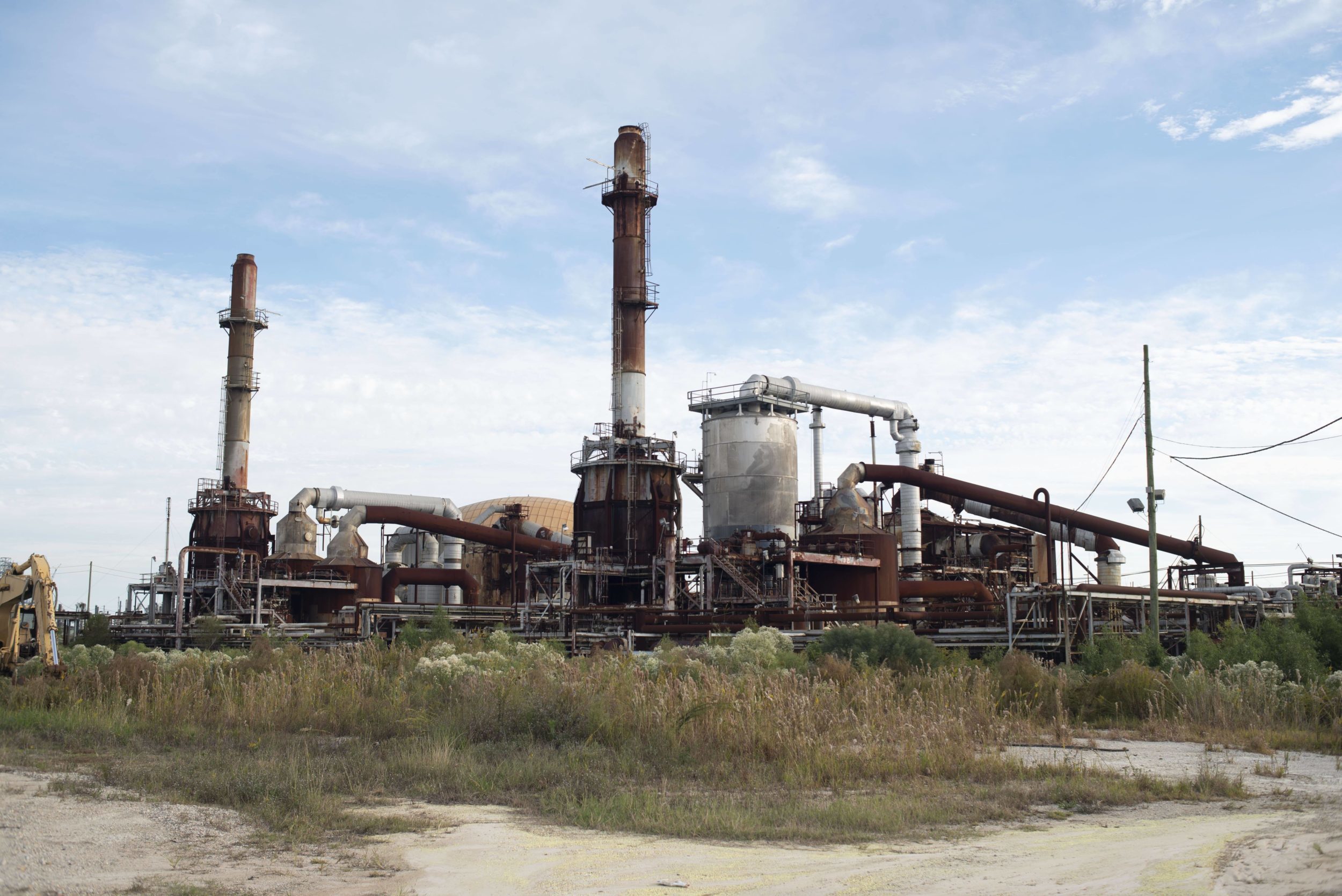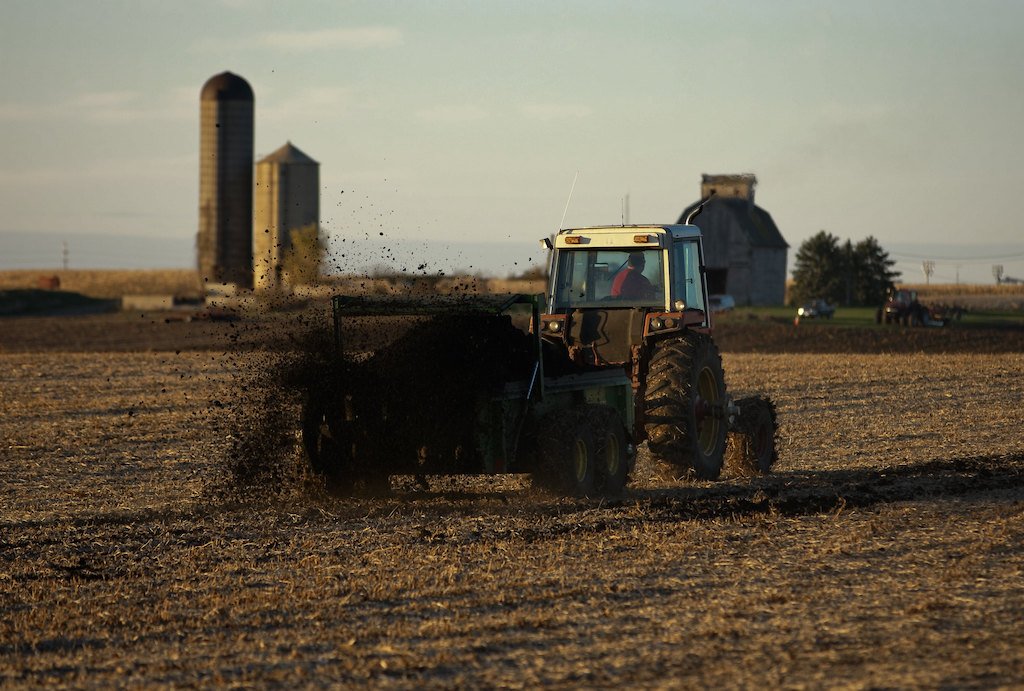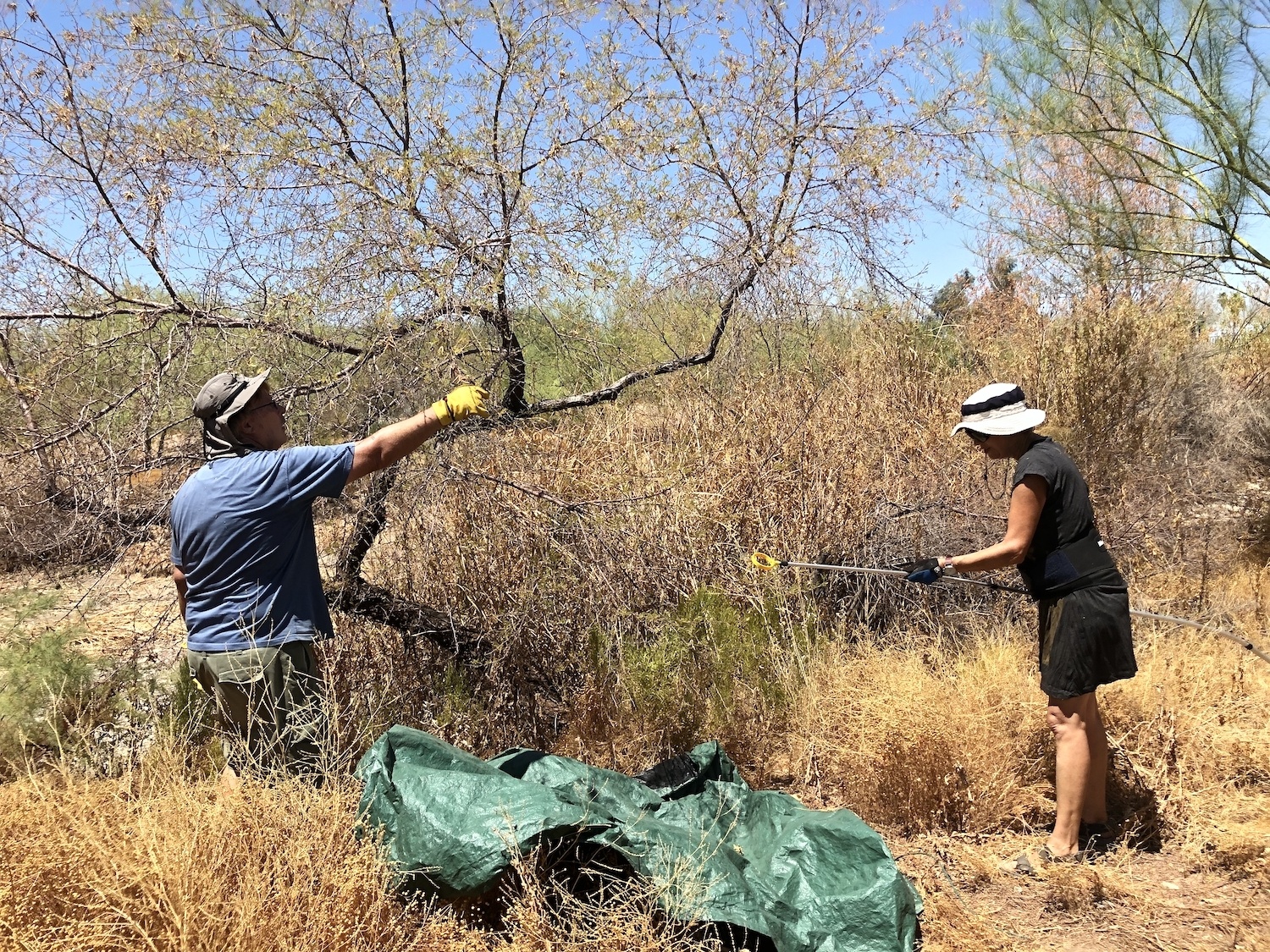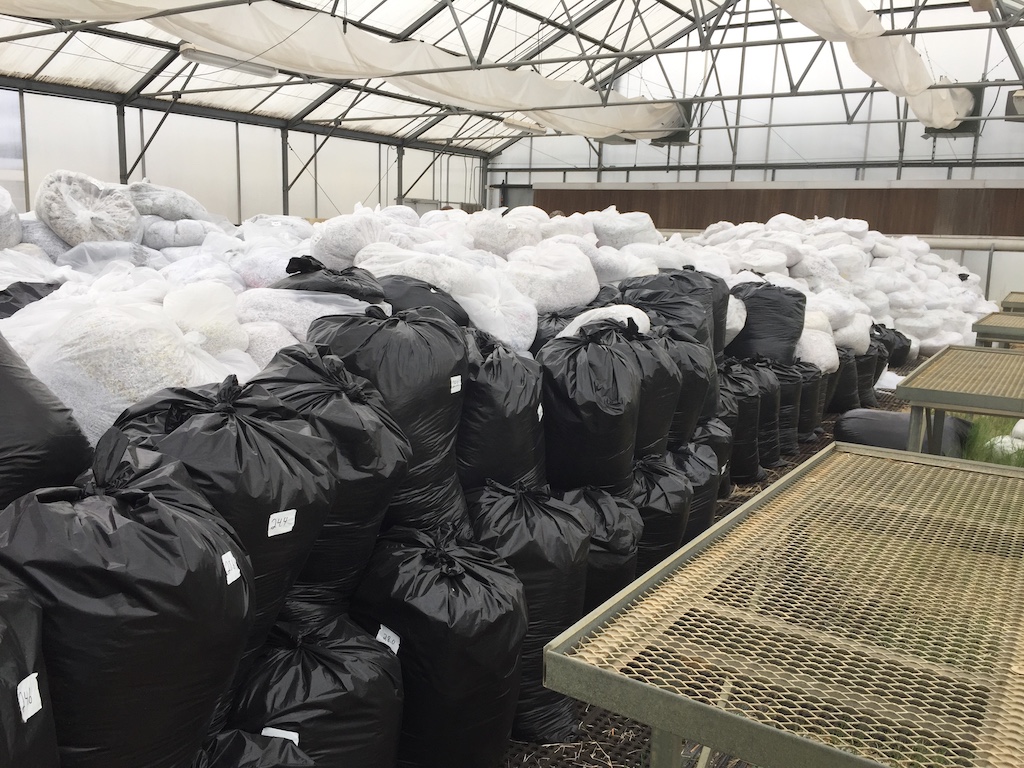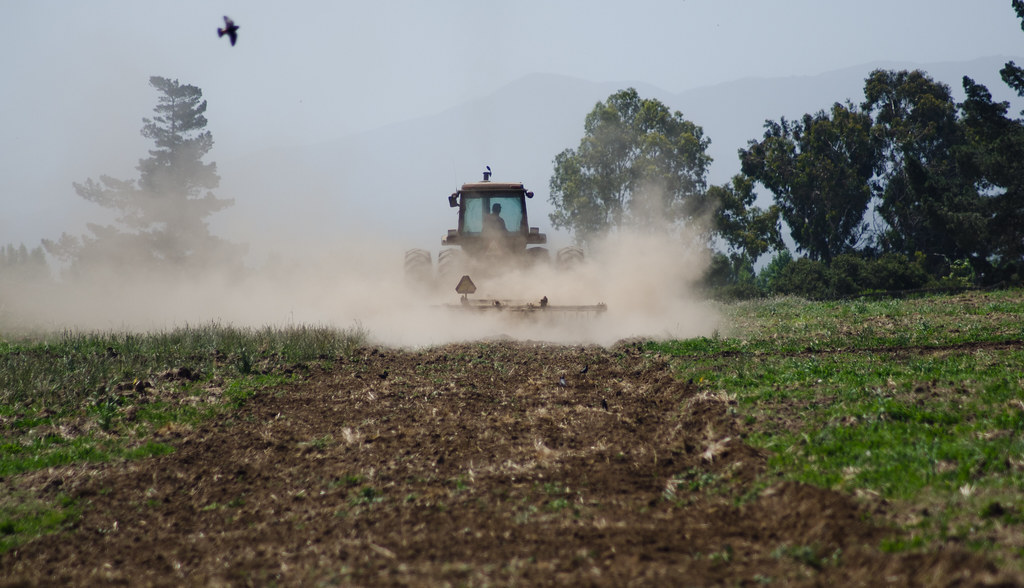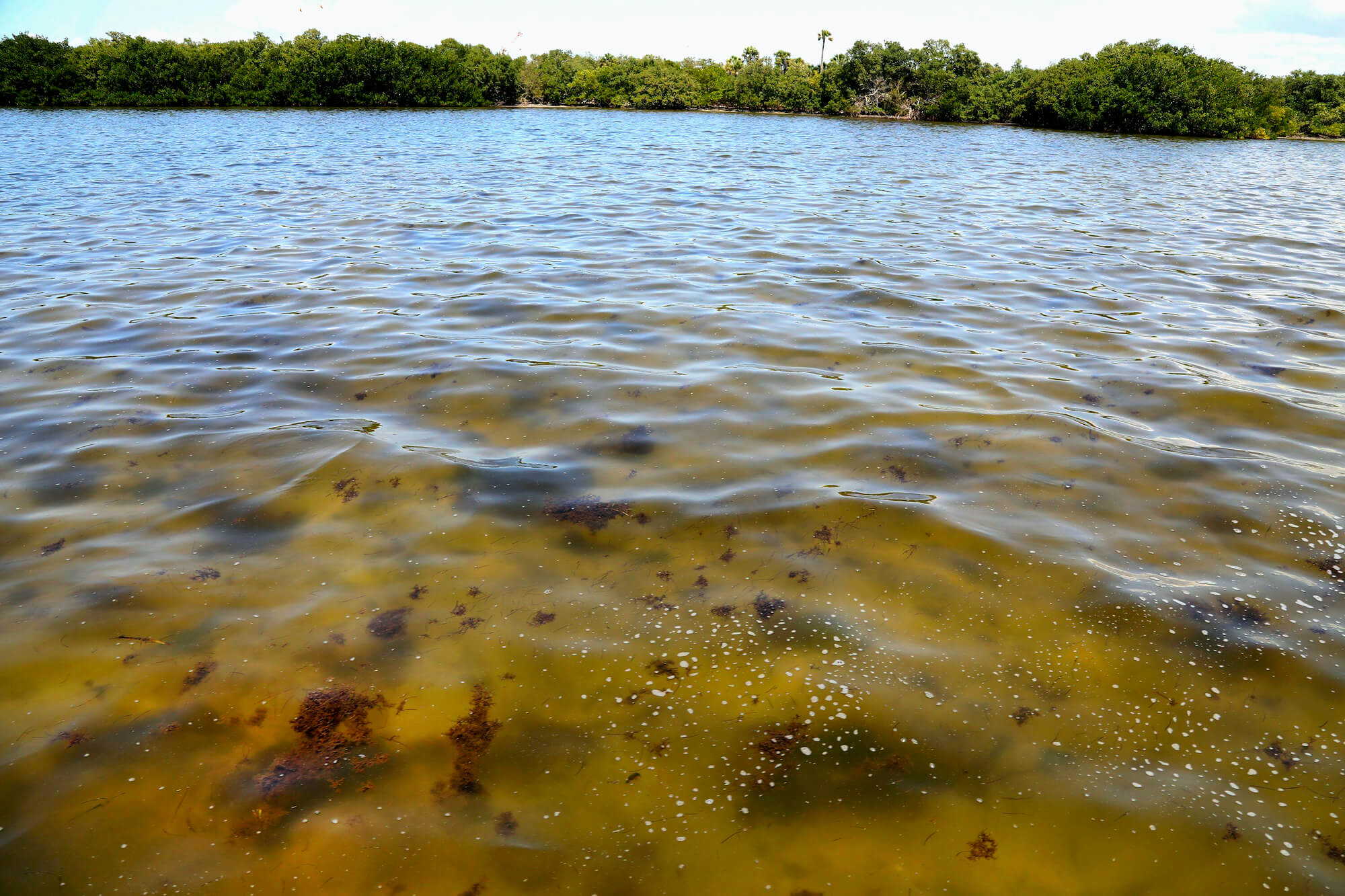
Douglas R. Clifford/Tampa Bay Times via AP
The precarious situation at Piney Point is not an anomaly. Experts have been warning about the site—and others like it throughout the country—for years.
Around 11 a.m. on April 3, an emergency alert flashed on residents’ cells phones in Manatee County, Florida. “Evacuate area NOW,” it read, according to a screenshot later published by the Tampa Bay Times. “Collapse of Piney Point Stack imminent!”
Above: Seasonal algae floats in the water off Port Manatee, on Tuesday, 6, 2021, in Manatee County, Florida, as authorities respond to a leaking wastewater pond at the old Piney Point phosphate plant.
Three weeks later, the details of that emergency have become clear. On March 26, a leak sprung at Piney Point, a phosphate mine and fertilizer plant that’s been defunct since 2001. The facility—one of more than two dozen in the state, nine of which are still active—houses stacks of phosphogypsum, a toxic, radioactive byproduct of the fertilizer production process. These flat, white, mesa-like “gypstacks” of accumulated solid waste, which can stretch up to five stories tall, then become crudely efficient containment ponds for liquid waste.
For safety reasons, managing these open-air ponds is a round-the-clock responsibility. Water is continually pumped to treatment plants in order to be processed, or diverted into a network of plastic-lined reservoirs. Since the ponds can grow in volume by millions of gallons with every rainfall, this combination of treatment and diversion, as well as evaporation, is needed to remove wastewater more quickly than rain can fall or new liquid waste is generated.
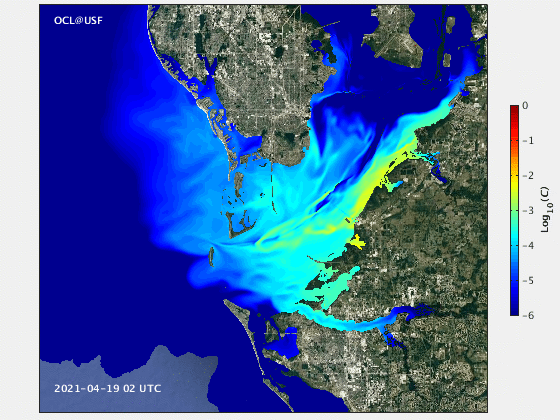
It’s a precarious system in which small problems can quickly become emergencies. And that’s the story at Piney Point, where a potentially manageable leak got suddenly serious. According to the Tampa Bay Times, one wastewater pond’s inch-thick plastic liner tore, releasing thousands of gallons a day into the sediment beneath. On April 2, the escaping deluge caused a containment wall to shift, rendering a hole at the bottom of the berm. Crews worked through the night to plug it but the situation worsened; wastewater by the hundreds of millions of gallons was unleashed and threatened the entire structure with collapse.
On the morning of April 3, Florida Governor Ron DeSantis declared a state of emergency in Manatee and two neighboring counties and more than 300 homes were evacuated. Ultimately, authorities pumped more than 200 million gallons of polluted wastewater into the Tampa Bay to lessen pressure on the containment structure. This helped avoid human catastrophe, but it sparked an ecological tragedy whose true impact on water quality and marine species has yet to be determined. Governor DeSantis has vowed the incident will be the “last chapter” in the story of Piney Point, and an anticipated $200 million cleanup project will now commence.
Any yet, the calamity at Piney Point was foreseeable—and foreseen.
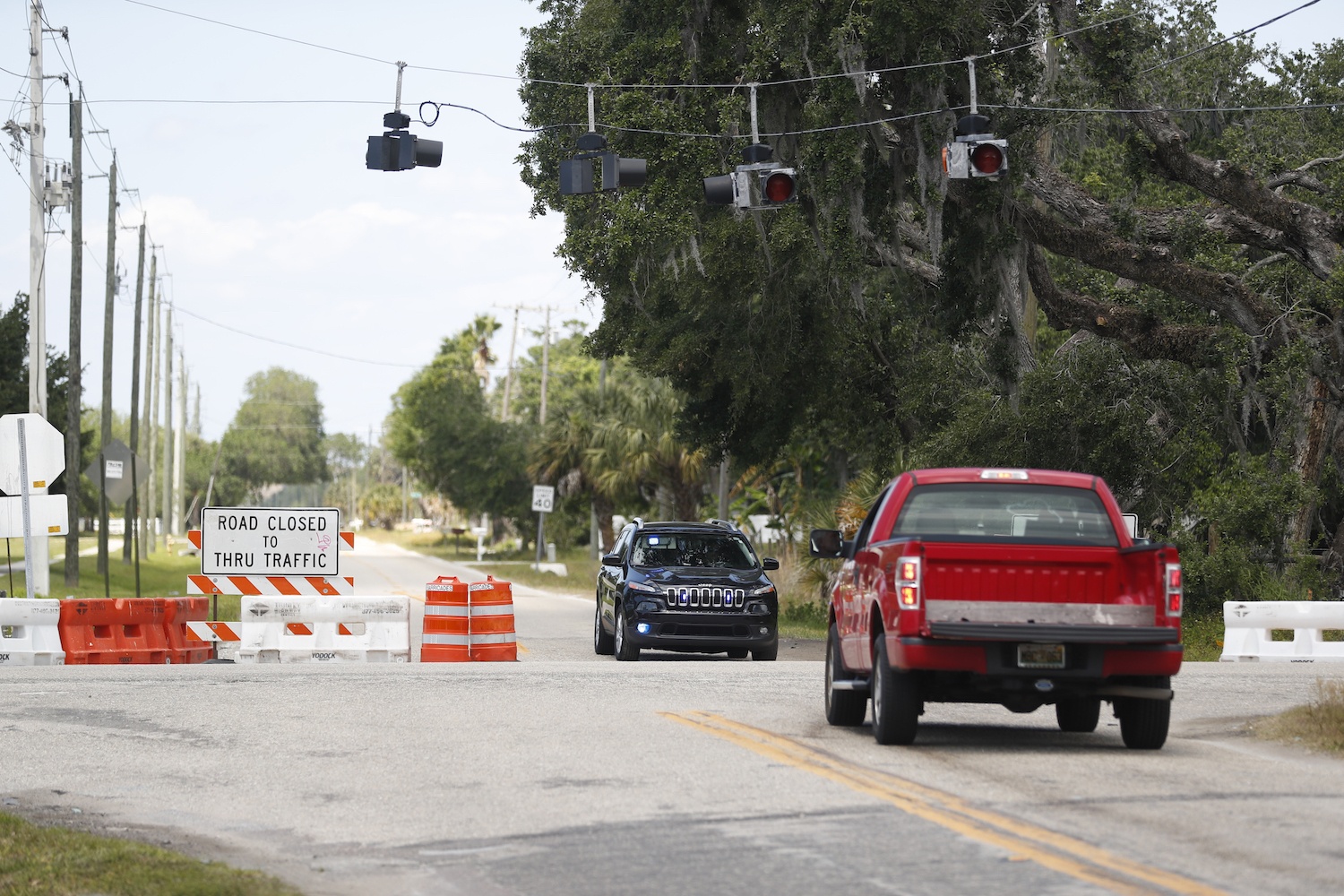
Road closures are seen at Moccasin Wallow Road due to a wastewater breach at the former Piney Point phosphate plant on April 5, 2021 in Gillette, Florida. An evacuation order had been issued, affecting more than 300 homes in the area.
Octavio Jones/Getty Images
In a feature published almost exactly a year ago, The Counter contributing writer Boyce Upholt chronicled the ravages and potential peril of the phosphate mining industry. His piece, “Eaters of the earth: How the fertilizer industry leaves a trail of destruction across the American South,” began in Florida and made its way to the bayous of Louisiana, revealing how the region’s aging phosphate fertilizer facilities comprise a network of ticking time bombs.
In St. James Parish, Louisiana, Upholt spoke to local residents living in the shadow of a gypstack owned by the Mosaic Company, the world’s largest producer of concentrated phosphates. Many community members worry one of the gypstacks will overflow or burst, with good reason: In 2018, a containment wall at Mosaic’s facility started to budge under the weight of its wastewater pond, shifting 13 feet before detection. If breached, the broken wall could have released its 700 million gallons of sludge—a worst-case scenario narrowly avoided, and one very similar to the near disaster at Piney Point.
A new investigation by the Tampa Bay Times shows how a well-documented combination of ineptitude, short-sightedness, and greed led to the current debacle at Piney Point. When the site’s current owner, private investment company HRK Holdings, expressed (financial) interest in adding waste from a Port Manatee dredging project to Piney Point’s gypstacks, the U.S. Army Corps of Engineers warned that the project might come with unacceptable risk. This advice was dismissed—leading to an almost immediate failure of the plastic lining of Piney Point’s reservoir. A sequence of fixes never resolved the problem, according to the Times. As recently as March 2020, an independent engineering firm hired to evaluate the site found an imminent danger of “catastrophic damage to the public and the environment” due to the “unknown and likely compromised condition” of the liner.
“We’re trained to think we can keep [creating waste] and technology will save us.”
With the dangers of phosphate mining now made abundantly, dramatically clear, what should happen next? Discussion about that began even before the latest incident at Piney Point. Under the Trump administration, the Environmental Protection Agency (EPA) approved the use of phosphogypsum in government road construction projects, ostensibly to mitigate the costly and hazardous burden of storing the stuff; one billion tons’ worth of it is piled all around Florida, which produces 80 percent of U.S. phosphorous. David Kanter, assistant professor of environmental studies at NYU, said that while the Trump EPA approval “did not include enough quality controls to be environmentally safe,” he believes that researching ways to properly treat phosphogypsum and similar industrial byproducts so they can be used in road repair or as soil amendments is valuable. This would create a circular economy in which “waste that is a real risk to society” is repurposed, keeping it out of our air and waterways, he said.
David Cwiertny, a University of Iowa professor of civil and environmental engineering, is dubious that phosphogypsum can ever be made truly “safe” for the environment—or that there’s a research mechanism in place to understand whether treating it to “improve” it wouldn’t generate another deleterious product to then contend with. According to Scientific American, similar enthusiasm once abounded for this sort of “end of pipe” solution around using a toxic industrial byproduct that comes from burning coal, called fly ash, to amend soil—now shown to cause crops to absorb hazardous amounts of arsenic. The precarious open pits used to store it, like those used for phosphogypsum, are also prone to disastrous spills—a 2008 breach in Tennessee, and another in 2014 in North Carolina, poured ash, arsenic, and selenium into local rivers.
The inefficiencies and pitfalls of “solutions” aside, the Piney Point disaster highlights a larger issue: Certain regions of the U.S. are overwhelmed with waste products that either support or result from industrial agriculture, and “we’re running out of room to store them,” Cwiertny said. Piney Point is just a microcosm of industrial agriculture’s much vaster pollution problem.
“These are things we don’t want in the environment,” Cwiertny said. “And yet, we keep finding ways to reuse them to keep disposal costs down, rather than regulating them as [materials] that can devastate ecosystems and public health.”
“Piney Point is a pretty good example of all the problems that are coming after years of inaction and incompetence.”
In the same vein, he said the livestock sector has been bullish on anaerobic digesters that can transform the 1.4 billion tons of manure that CAFOs generate each year into biogas. But this ostensibly earth-friendly method of disposal is problematic; it produces carbon dioxide, methane, and nitrous oxide and, said Cwiertny, “might just be an excuse to allow big producers in Iowa to raise more pigs” whose manure—just like coal ash, just like phosphogyspum—will lead to an uptick in hazards for nearby communities.
Silvia Secchi, a natural resource economist in University of Iowa’s department of geographical and sustainability sciences, points out that another “fix” common to CAFOs is to empty manure lagoons, which have been shown to contain antibiotics, E. coli, MRSA-resistant bacteria, and pesticides, onto crop fields—which then contaminate soil and leak into waterways. “We’re trained to think we can keep [creating waste] and technology will save us,” she said.
The solution, then, may be less about finding high-tech re-use mechanisms, and more about confronting what some in ag are loath admit: Cutting consumption is far more efficient than contending with massive volumes of waste. Practically speaking, this would require more regulation and oversight.
Kanter advocates for a kind of management that would “work around the edges to make the system that created the problem more efficient.” Instead of regulating a farmer’s fertilizer usage, for example, he believes government should mandate that fertilizer companies sell only their niche “enhanced efficiency fertilizers. That way you regulate a smaller number of actors but are still influencing what happens on a farm,” he said.
Secchi would like to see more direct regulation of the waste products that are allowed to proliferate around industrial ag, as well as better enforcement. She believes current lack of oversight is purposeful, to “hide the extent of the problem,” which would be both expensive and complicated to mitigate. Further, she said states have a conflict of interest in regulating an industry that causes 10 percent of U.S. emissions for its 1 percent contribution to GDP—but that creates lots of jobs.
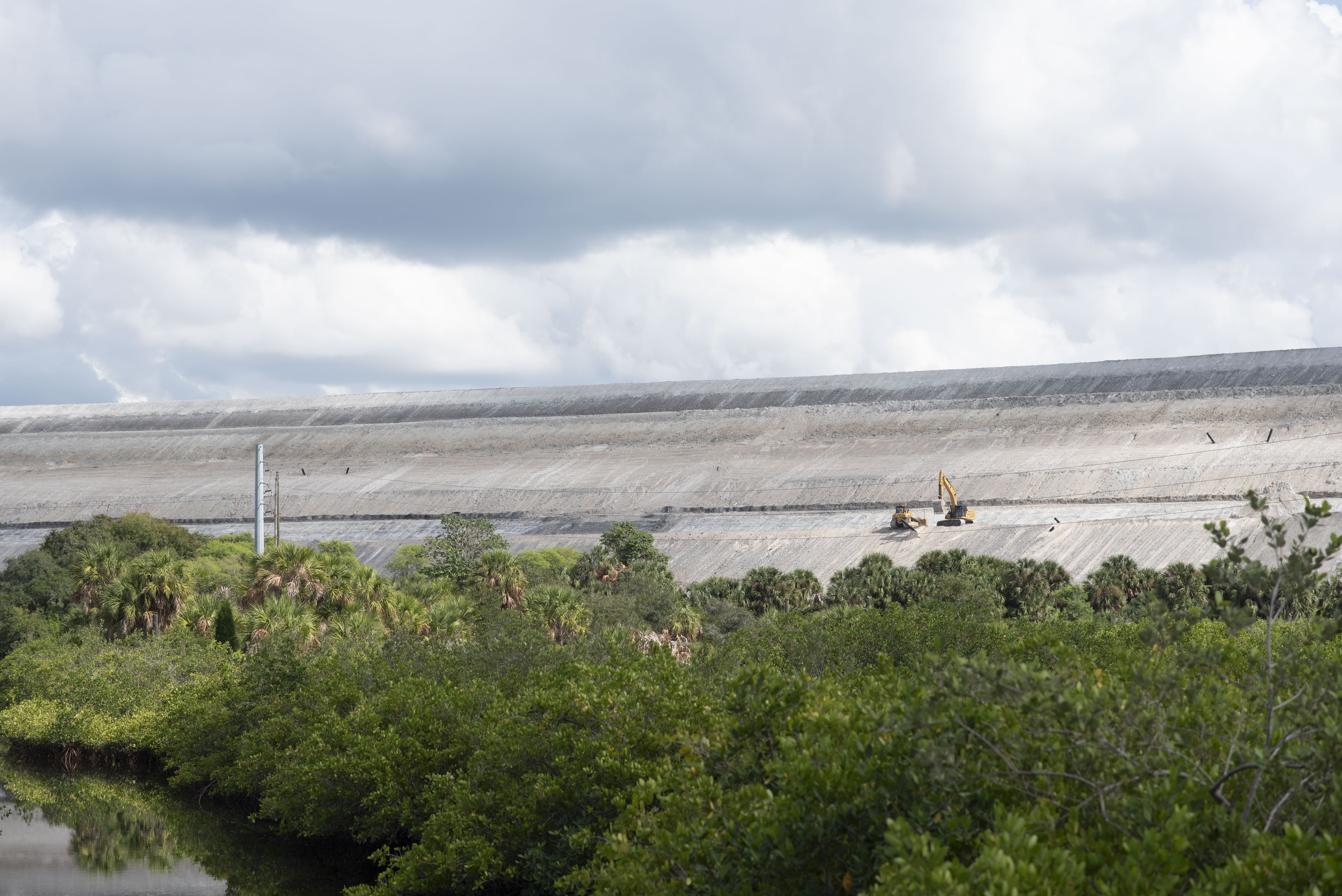
In a “gypstack” near Fort Meade, Florida, processed phosphate rock is piled up and stored indefinitely
Boyce Upholt
“Piney Point is a pretty good example of all the problems that are coming after years of inaction and incompetence,” said Cwiertny. There’s now a petition up before the EPA to reverse a 1991 ruling that allowed phosphogypsum to be excluded from regulation under the Resource Conservation and Recovery Act (RCRA), which Cwiertny said was meant to mandate “best practices for the worst of the worst waste,” but at times is “far too deferential to industry.” He’d also like to see more, and more stringent, regulation and monitoring—that would lead to, in the case of phosphogypsum, “everything from better structures in place to hold it, to better expectations for the liners that can protect aquifers from discharges, to regulating that [waste] water to treat it to where it’s safe to discharge,” he said.
Nevertheless, the experts agree that even if regulation of byproducts like phosphogypsum, CAFO manure, and fly ash were to happen quickly—and Secchi expresses doubt that Secretary of Agriculture Vilsack, a former Iowa governor whom critics consider to be pro-CAFO, will push for meaningful change—there’s still a long road to travel before ecosystems can begin to recover.
Three weeks after Piney Point’s leak began, Secchi took to Twitter to decry the latest environmental crisis, 1,400 miles away from that spot of Gulf Coast, triggered by her home state’s CAFOs: a several-hundred-thousand-gallon spill of manure into an environmentally sensitive creek that triggered a massive fish die-off. “The whole state is a toxic ag dumping ground and no one cares,” Secchi tweeted.
That same day, the Los Angeles Times dropped a story about the negative intergenerational health effects of long-banned pesticide DDT, also once used in agriculture, and the interconnectedness of these recurring and lingering catastrophes was very much on Secchi’s mind. Just as the consequences of DDT use persist, the fallout from the Piney Point disaster will likely reverberate in the Tampa Bay for years to come. For Secchi, the irreversibility of that harm underscores the imperative to address mounting environmental crises before they become even more acute.
“I don’t know how much of that you can ‘fix,’ and we’re not going back to before-the-fact,” Secchi said. “It’s the same as DDT. Some of that damage you can’t eliminate.”

